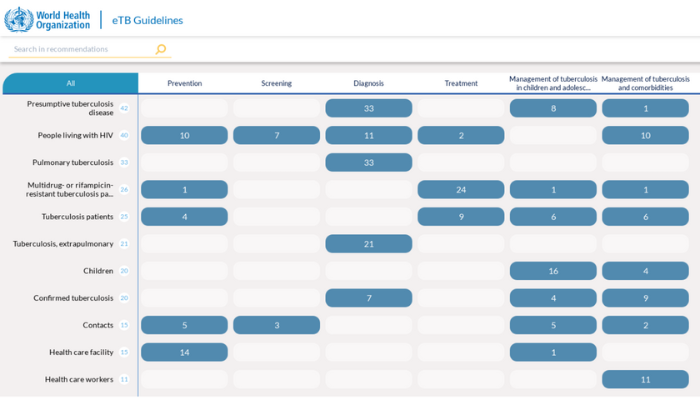New approach means faster understanding in public health crisis

A research team led by McMaster University professor Holger Schünemann has found that a website giving a map of the recommendations works better than a conventional website for distributing the information effectively.
When a public health crisis happens, it’s often quickly an international problem, and health-care professionals around the world need to have rapid access to the best guidelines for diagnosis and treatment as well as policy direction. A research team led by McMaster University professor Holger Schünemann has found that a website giving a map of the recommendations works better than a conventional website for distributing the information effectively. The study was done for the World Health Organization (WHO) and Canadian Institutes of Health Research testing accessibility to recommendations for tuberculosis, a preventable and curable disease which is still the world’s top infectious killer. “What are public health recommendations worth, if the public doesn’t understand them,” said Schünemann, professor of clinical epidemiology and medicine as well as co-director of the WHO Collaborating Centre for Infectious Diseases, Research Methods and Recommendations. “We found the new approach is much more accessible, people are more satisfied and, most important, we tested and found the new presentation improved the understanding of the information.” The WHO eTB Guidelines are found at https://who.tuberculosis.recmap.org/grid, and the paper was published by PLOS Global Public Health at https://journals.plos.org/globalpublichealth/article?id=10.1371/journal.pgph.0001166 . Schünemann added that the research group has also applied the methodology to digitize and present all COVID-19 guidelines.
Research Findings